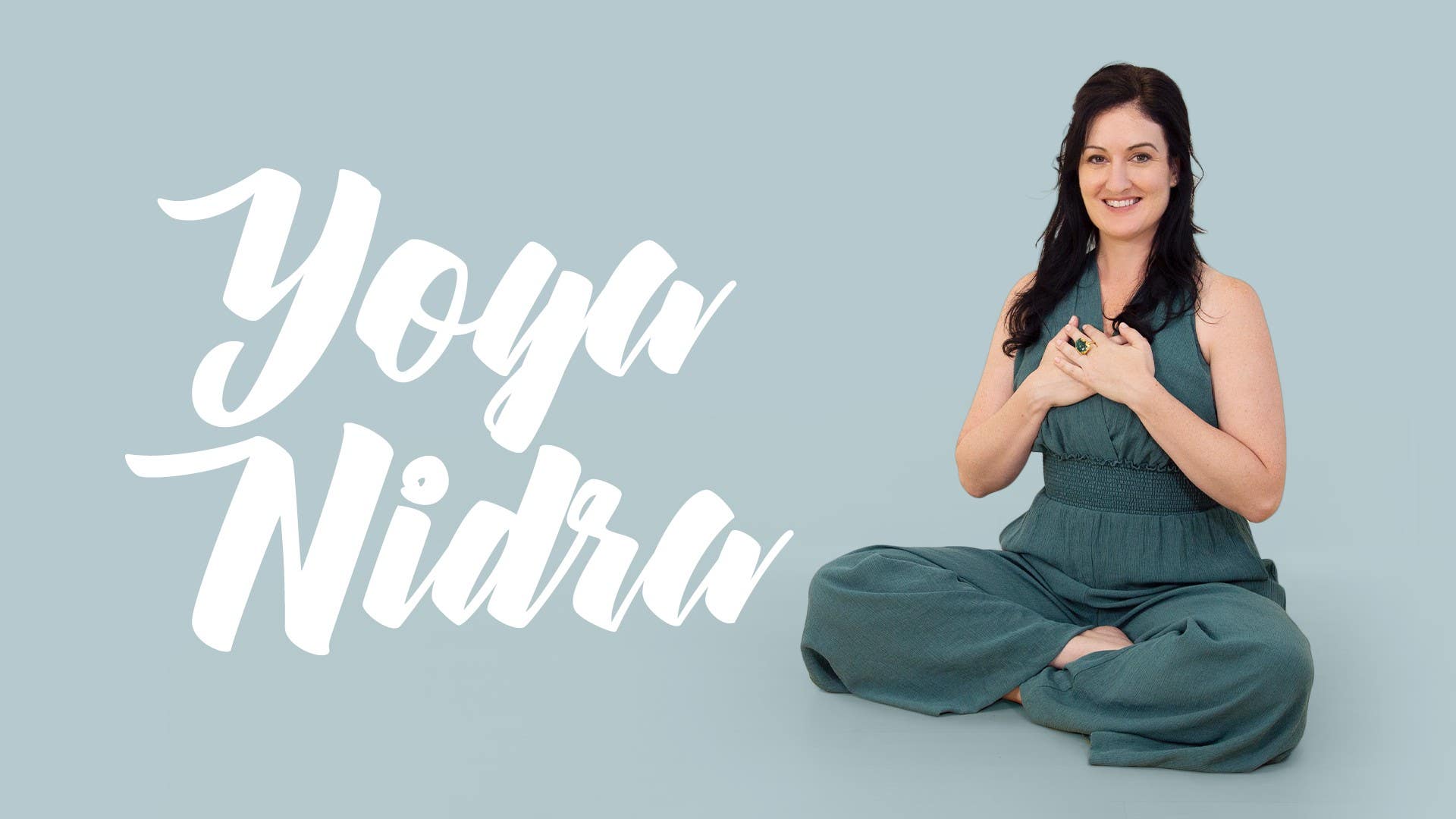Description
About This Video
Transcript
Read Full Transcript
The practice of Yoga Nidra often invites us to set an intention. It gives us this ability to plant our intentions quite deep. And we might be familiar with this idea of resolution or setting an intention, I'm sure many of you like me every New Year's Eve, clock strikes 12 and we have all these glorious plans of how we're going to become a completely different human in the next year. And if you're like me, those things might stick around for a day or a week, a month if you're lucky, but inevitably they begin to dissolve. Our willpower, the intention itself just begins to dissolve and fall away.
And one of the ideas of why this might be occurring is that we set those New Year's Eve resolutions with our very conscious mind and they often start from a place of lacking with the assumption that we are not good enough already and we need something from the external world to bring in, to make us whole or to make us this new evolution, this new person. Yoga Nidra offers us something different. It offers us this idea of a Sankalpa. And Sankalpa starts from a radical notion, the radical premise of you are already enough. You have everything that you need to fulfill your life's purpose, your Dharma.
All you need to do is to channel your mind and your heart to bring it into very clear focus and plant that seed deep inside. The idea of Sankalpa, the word Sankalpa itself gives us some notion of this and comes from two little Sanskrit words, san and kalpa, kalpa meaning a rule that is followed above all other rules and san in support of our highest truth. So this resolution can be in a couple of different categories and it would be helpful if you had a journal and maybe some paper and a pen for you to write down anything that's coming to you and we'll also do a little meditation at the end to help us be in a more receptive state where we can find our Sankalpa or hear the Sankalpa kind of bubble up inside of us. So there's two main camps of these Sankalpas. One is something kind of tangible that you'd like to see manifest in your life in the next year, year and a half.
So for me, it's writing a book and so your Sankalpa might be something like, my heart is expressed into words and I've completed my book. So something tangible, something you'd actually like to see come into your world. Another type of Sankalpa might be a statement about your true nature. So maybe something that you'd like to bring out a little bit more or embody a bit more fully. So this might be something like, my true nature is peace, I enjoy my life fully, I am calm, I am centered, I am abundant, you know, something that you have inside that you'd like to bring out and embody.
Now these Sankalpas are going to be planted when we're in a quieter state inside of these Yoga Nidra practices. And so because you're not going to be in that kind of critical, distractible mind, the conscious mind, we're going to be planting it a little bit into the subconscious or unconscious mind. It's important that these phrases be succinct, that they be short, so you can repeat them in the same way each time. It's important that they be determined sincerely, that you have a sincere interest in these Sankalpas, and that they be stated in the present tense and also in a positive fashion. So instead of saying something like, I will try not to get so angry at my kids, you know, that's a bit of a weak Sankalpa, instead saying, I am peaceful, I enjoy my life fully, I find joy in my kids, something to that nature, where it's stated positively and in the present moment.
Because again, there's nothing to be thought of reaching outside of ourselves, it's just uncovering our true nature. So I'm sure there's already Sankalpas bubbling up from your conscious mind, but let's move into a quieter state, so you can really hear the true whispers of the heart. And for this meditation, let's take Kubera Mudra, so you're going to take your hands, connect your thumb, index and middle finger together, just like a little pinch, and then the fourth and fifth finger will curl back towards the palms, and you'll place these hands on top of the knees or thighs. This just is said to be a mudra or gesture to bring in abundance of all kinds, so it might be an auspicious one to use for our small meditation practice. So just choose a comfortable seat, you might want to have your journal nearby for later on.
Once you're ready, just draw your spine a bit taller and close the eyes, and just allow yourself a few moments to settle, and the body quieting, and the breath growing quiet. And bring your attention to the very subtle breath that you might experience at the tip of the nose, the walls of the nostrils, sliding above the upper palate, and almost like two independent rivers that merge back to their source in the midbrain. You follow that very subtle movement of breath, you might just feel the density of your presence growing in the midbrain, you might experience it as a vibration, some experience it as a light or a glow, or just the density of your presence building in the middle of the brain. Relax through the back of each eye and the scalp, and feel it growing brighter, might even experience it as a very luminous glow, a ball of light, you can move that sensation or that light from the midbrain down through the soft palate, through the throat, to the heart, you might see it as a, what the yogi is called, jyotir lingam of an oval shaped light encompassing the midbrain, throat, and heart center, connecting the whispers of the heart, its translation through the throat, its expression, your intuition, or the knowledge of your true self. In this space you can quietly ask of yourself, of that inner teacher, that inner wisdom, to hear your sankhopa, your heart's desire, a reflection or statement of your true nature. Just give yourself a moment just to listen. Yes, ma'am! You can bring your chin to your chest and take a deeper breath in and out.
Keeping the gaze internal even as you open the eyes and then just spend a few moments writing down anything that's coming to you so that you can create these sincere, short, positive, transformational sankopas that we can plant quite deeply in the fertile soil of these Yoganidra practices. So stay in touch. Let me know how it's going for you and I'll see you in the Yoganidra practices. Namaste.
Yoga Nidra
Comments
You need to be a subscriber to post a comment.
Please Log In or Create an Account to start your free trial.











